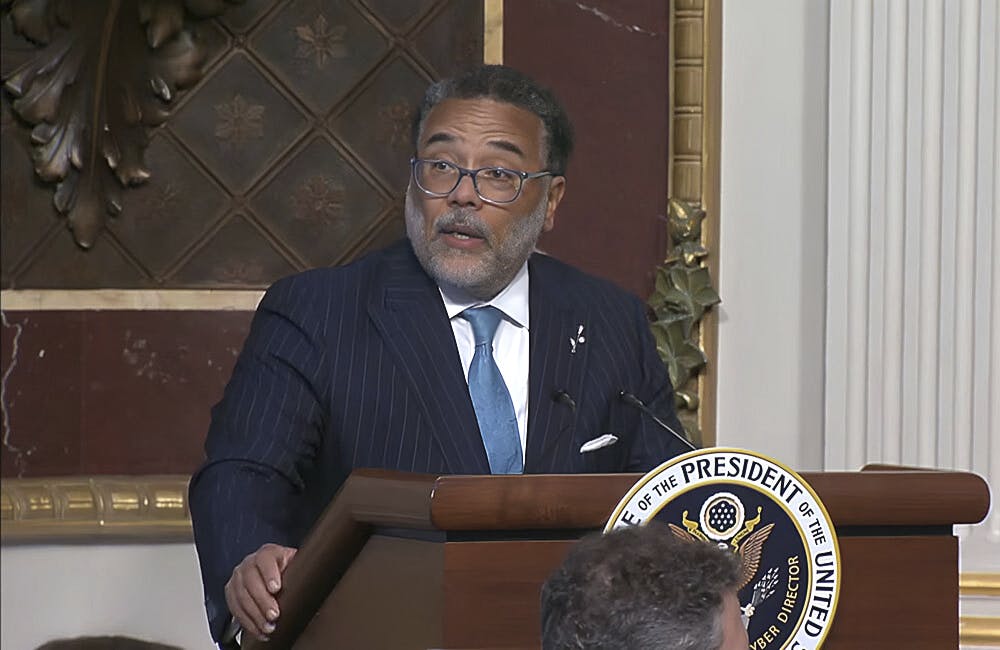The Outlook for Federal AI Development in 2024
Agencies will see more benefits as well as challenges with the adoption of AI into 2024 and beyond.

Artificial intelligence development has made significant impacts across agencies in 2023. This led to a White House executive order directing agencies to develop and use it responsibly.
In the new year, agencies across the board will be working toward the various directives of this order to not only to improve service delivery, but also to prevent malicious actors from abusing and misusing the technology.
As a result, agencies have released several strategies and other implementation plans. Here is a look at how agencies are thinking about the technology and some of its benefits by missions.
AI and Cybersecurity
In November, CISA unveiled a new roadmap for AI adoption specifically for cybersecurity. The roadmap establishes a more secure way to develop and implement AI capabilities with five lines of effort:
- Responsibly use AI to support mission.
- Assure AI systems.
- Protect critical infrastructure from malicious use of AI.
- Collaborate and communicate on key AI efforts with the interagency, international partners, and the public.
- Expand AI expertise in the federal workforce.
“Artificial Intelligence holds immense promise in enhancing our nation’s cybersecurity, but as the most powerful technology of our lifetimes, it also presents enormous risks,” CISA Director Jen Easterly said in a statement. “Our Roadmap for AI, focused at the nexus of AI, cyber defense and critical infrastructure, sets forth an agency-wide plan to promote the beneficial uses of AI to enhance cybersecurity capabilities; ensure AI systems are protected from cyber-based threats; and deter the malicious use of AI capabilities to threaten the critical infrastructure Americans rely on every day.”
AI and Data Modeling
The National Oceanic and Atmospheric Administration (NOAA) is using AI to provide forecasters more accuracy in weather data and climate modeling, as well as helping simplify moving data across multiple systems.
For CTO Frank Indiviglio, AI’s benefits have great power for the agency.
“AI helps us focus the compute that we have on things we’re really concerned with like hurricane models, AI can help us focus most of the compute on the storm rather than outside of the storm. It can help reduce data movement and help us get better answers,” said Indiviglio in a GovCast interview.
Still, Indiviglio says adopting AI is challenging.
“It’s a new technology that you have to really get your arms around and truly understand it. You have to have data scientists and machine-learning experts to build around your science teams,” he said. “You have to help your workforce so you can get to a place where you can rapidly adopt these things and make them usable and make sure people trust them. “
AI for Health Care
The executive order is also calling on health agencies to focus on safety concerns around the technology. Per the order, the Department of Health and Human Services (HHS) will create an AI task force that will be utilized across the health care ecosystem.
The safety program will collect reports, examine harmful AI-related health care practices and establish resources to design AI educational tools.
The Department of Veterans Affairs is exploring how AI can help VA make better, faster and more-informed decisions — improving veteran health outcomes and benefits decisions while eliminating redundant administrative tasks.
“AI solutions can also help us reduce the time that clinicians spend on non-clinical work, which will get our clinicians doing more of what they love most: caring for Veterans,” a VA spokesperson said in a statement to GovCIO Media & Research.
AI is also aiding the National Institutes of Health (NIH) in overcoming big data challenges and offering hope to the National Cancer Institute when it comes to improving research and treatment options.
The National Center for Advancing Translational Sciences (NCATS) at NIH is utilizing AI in its 2024 through 2029 Strategic plan to tackle big data and develop innovations that will reduce costly and time-consuming barriers in translational research.
The National Cancer Institute is exploring AI to screen for and treat cancer and sees the emerging technology supporting treatment for patients. NCI is also looking into how AI can help advance alternative treatments to chemotherapy.
Federal leaders are also looking at AI’s impact on health equity.
The Office of the National Coordinator for Health Information Technology (ONC) is in the final stages of a proposed rule that would empower health care providers and ensure more transparency over algorithms used in clinical decision support. National Coordinator for Health IT Dr. Micky Tripathi said ONC is thinking more about health equity as a core design principle.
“One is starting with the data itself. You’ve got to have that data available in order to be able to identify where there might be communities that are getting different types of care,” said Tripathi.
AI Streamlines Workflows
USPTO Emerging Technology Director Jerry Ma said that AI’s role in the agency’s behind-the-scenes operational work has enabled the agency to deliver maximum value to the innovation community and stakeholders.
“AI has a central role to play in making sure that examiners are able to contend with that, which ultimately delivers value to our stakeholders because they receive benefits from stronger, higher quality and timelier patent and trademark brands,” Ma said.
According to Securities and Exchange Commission Chief Strategy and Innovation Officer Tanu Luke, AI is also providing the SEC with a better way to identify cybersecurity threats and fulfill requirements of the zero-trust mandate.
“We want to be mindful of more than just the immediate threats,” said Luke. “We want to look at how AI is going to help with identifying and proactively help with cybersecurity incidents in the future.”
This is a carousel with manually rotating slides. Use Next and Previous buttons to navigate or jump to a slide with the slide dots
-

State Department Touts Digital Diplomacy in New Tech Strategy
The new plan outlines ‘digital solidarity’ to counter threats in cyberspace, including malicious artificial intelligence.
8m read -

DHS, DOD Officials: AI is a Teammate, Not a Tool
AI can work alongside government by providing better information to humans for them to make real-time decisions.
5m read -

White House Might Remove Degrees From Federal Cyber, IT Jobs
White House and federal leaders are moving toward skills-based hiring practices to fill critical roles in IT and cybersecurity.
5m read -

Federal Agencies Make the Case for Quantum
Amid development of emerging technologies like AI and machine learning, leaders see promise in quantum computing.
6m read








